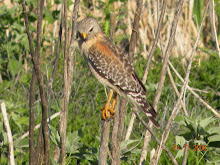

* The Least Flycatcher was first described in 1843 by Spencer Fullerton Baird, an American ornithologist and ichthyologist. It is also called Chebec, after the sound it makes.
* Unlike most species of songbird, adults migrate to their wintering grounds before molting, while young birds molt before and during autumn migration.
* An incubating bird is surprisingly tame and will often allow itself to be touched or even lifted off the nest, however with other birds it is aggressive and has been known to attack Brown-headed Cowbirds.
* A group of flycatchers has many collective nouns, including an "outfield", "swatting", "zapper", and "zipper" of flycatchers.












